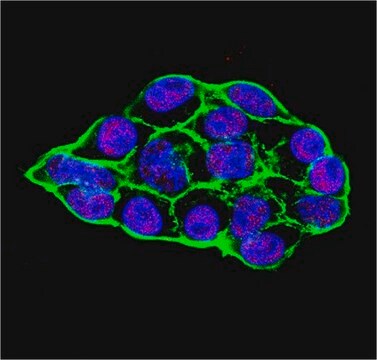S9797
Ten Eleven Translocase
TET1CD mouse recombinant, expressed in in HEK 293 cells
Synonyme(s) :
CXXC-type zinc finger protein 6, Cxxc6, Kiaa1676, Methylcytosine dioxygenase TET1, Ten-eleven translocation 1 gene protein homolog, Tet1
About This Item
Produits recommandés
Produit recombinant
expressed in HEK 293 cells
Niveau de qualité
Forme
liquid
Concentration
≥1 mg/mL (by bradford)
Conditions d'expédition
dry ice
Température de stockage
−70°C
Description générale
Actions biochimiques/physiologiques
mTET1-mediated cytosine methylation on C5 is a mammalian genome epigenetic modification, which is involved in transcriptional regulation.
TET1 is utilized in TET-assisted bisulfite sequencing (TAB-seq), a method for the identification of 5hmC at single-base resolution, and the determination of its abundance at each modification site. This method is an improvement of the traditional bisulfite sequencing, which has been widely used to detect 5mC at single-base resolution, but cannot differentiate 5mC from 5hmC, as both resist deamination during the treatment of DNA with sodium bisulfite. The TAB-seq method uses mTET1 to selectively convert 5mC to 5caC in two steps: protection of 5hmC through glucosylation, and mTET1-mediated oxidation of 5mC to 5caC.
Autres remarques
Code de la classe de stockage
10 - Combustible liquids
Classe de danger pour l'eau (WGK)
WGK 1
Certificats d'analyse (COA)
Recherchez un Certificats d'analyse (COA) en saisissant le numéro de lot du produit. Les numéros de lot figurent sur l'étiquette du produit après les mots "Lot" ou "Batch".
Déjà en possession de ce produit ?
Retrouvez la documentation relative aux produits que vous avez récemment achetés dans la Bibliothèque de documents.
Notre équipe de scientifiques dispose d'une expérience dans tous les secteurs de la recherche, notamment en sciences de la vie, science des matériaux, synthèse chimique, chromatographie, analyse et dans de nombreux autres domaines..
Contacter notre Service technique








